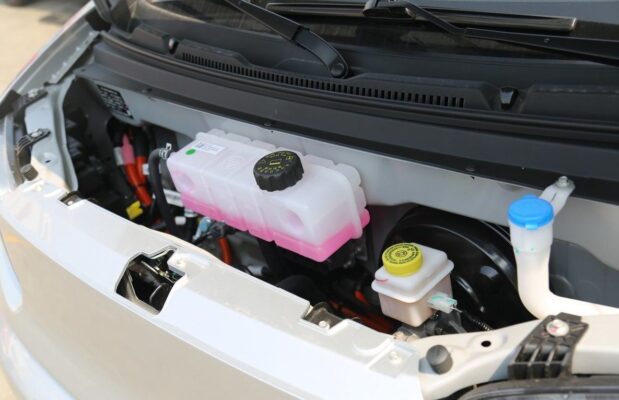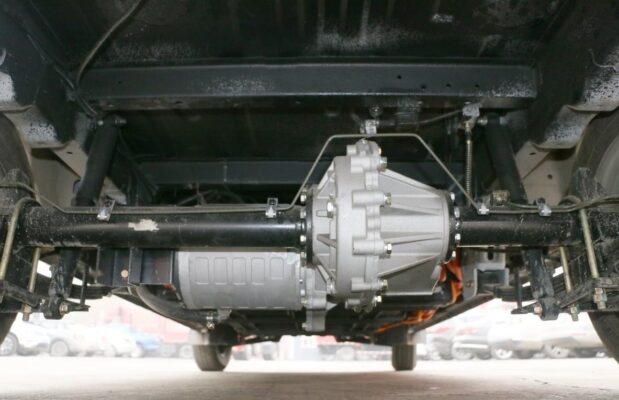Electric Truck Knowledge
Precautions for Maintenance of Electric Vehicles
Posted on by Electric Trucks
The maintenance of برقي گاڏيs differs significantly from that of traditional vehicles. The maintenance focus of traditional vehicles lies mainly in the engine system, involving regular replacements of engine oil, filters, and the like. In contrast, the maintenance of برقي گاڏيs centers on the daily upkeep of battery packs and electric motors.

The battery pack and motor of pure برقي گاڏيs take the place of the engine in ordinary vehicles to propel the vehicle. The gearbox also differs somewhat from that of conventional vehicles, but the chassis and electrical components are largely similar. Hence, there are still numerous commonalities between برقي گاڏيs and traditional ones. Since برقي گاڏيs are driven by motors, they do not require engine oil, the three filters, belts, tension wheels, or the concern of oil leaks.
Electric vehicles merely need to conduct routine inspections on the drive battery pack and motor and keep them clean. It’s evident that برقي گاڏيs hold substantial advantages over traditional vehicles in terms of maintenance. Now, for hybrid and plug-in hybrid models, engine maintenance is similar to that of ordinary gasoline vehicles, but motor maintenance becomes even more crucial. Regular addition of lubricating oil and inspections at the after-sales service are necessary.

Proper vehicle maintenance is indispensable for safe driving and reducing vehicle maintenance costs. Let’s first enumerate the maintenance items that are common for both general برقي گاڏيs and traditional vehicles:
- Replace wearable parts annually or every 20,000 kilometers.
- Replace antifreeze and brake fluid every two years or 40,000 kilometers.
- Inspect the chassis, lights, tires, and other conventional parts during each maintenance.
Let’s now briefly introduce the disparities in maintenance methods between pure برقي گاڏيs, such as Tesla برقي گاڏيs, and traditional ones. Common maintenance issues of traditional vehicles, such as the routine replacement of engine oil, engine oil filter element, spark plug, valve, wheel axle, crankshaft, connecting rod, gearbox, clutch, and others, do not arise in Tesla برقي گاڏيs. The maintenance of Tesla primarily focuses on the replacement of wearable vehicle components.
The only parts that Tesla برقي گاڏيs need to replace regularly are the four tires, two wiper blades, brake pads, and the like. In case of vehicle part damage, the after-sales service store will directly replace rather than repair them. According to the company’s annual $600 maintenance and update plan, Tesla technicians will inspect the battery pack’s cooling system, drive motor, and power electronic equipment to ensure that each component is in optimal working condition.

The Electric Motor
جي برقي گاڏي drive system is the most critical subsystem of an برقي گاڏي, responsible for converting electrical energy into mechanical energy and transmitting it to the wheels via the transmission device to drive the vehicle as per the driver’s intent. The electric motor of an برقي گاڏي is the core of the drive system. When the quality of the motor is appropriately selected, the performance of the drive system hinges on the drive motor.
The drive motor for برقي گاڏيs typically requires frequent start/stop operations, acceleration/deceleration, high torque at low speeds and during climbing, low torque at high speeds, and a wide speed range. Its main parameters include: motor type, rated voltage, mechanical characteristics, ڪارڪردگي, size parameters, reliability, cost, and more. اضافي طور تي, the electronic control system and drive system configured for the برقي گاڏي motor will also influence the performance of the drive motor.
- High Voltage: Utilize high voltage to the fullest extent permitted within the range. This can reduce the size of the motor and equipment like wires, especially the size of the inverter.
- High Speed: High-speed motors are compact and lightweight, which is beneficial for reducing the curb weight of the برقي گاڏي.
- Light Weight: The motor adopts an aluminum alloy shell to minimize its weight. The weight of various controller devices and the cooling system should also be as light as possible.
- Large Starting Torque and Wide Speed Regulation Performance: This endows برقي گاڏيs with excellent starting and acceleration capabilities. The motor has an automatic speed regulation function, which can alleviate the driver’s operational intensity, enhance driving comfort, and achieve a control response similar to the accelerator pedal of an internal combustion engine vehicle.
- High Efficiency, Low Loss, and Braking Energy Recovery Function: Electric vehicles should optimize energy utilization to maximize the driving range under the same total onboard energy. The recovered energy from regenerative braking can typically reach 10% جي طرف 20% of the total energy, a feat not achievable in internal combustion engine vehicles.
- Must Have High-Voltage Protection Equipment: To ensure the safety and proper functioning of the motor.
- Good Reliability, Strong Resistance to Temperature and Moisture, and Low Noise During Operation: Ensuring a smooth and quiet driving experience.
- The Structure of the Electric Vehicle Motor is Simple, Maintenance is Convenient, and the Price is Affordable: Facilitating easy maintenance and cost-effectiveness.

The Battery Pack
Lithium batteries are the predominant batteries employed in contemporary برقي گاڏيs. It’s not an exaggeration to say that batteries are not worn out but rather discharged. The charging performance of batteries plays a decisive role in the maintenance, lifespan, and performance of برقي گاڏي batteries.
- The discharge depth of the battery has a profound impact on the cycle service life of the battery. This is because the deeper the discharge depth, the greater the expansion and contraction of the electrodes, and the more active substances on the positive electrode fall off, thereby losing the discharge characteristics, deteriorating the performance until the end of its life. Therefore, when using the battery, deep discharge should be avoided as much as feasible. Shallow discharge and frequent charging are recommended. Generally, it’s optimal to charge the battery when the discharge depth is 50% – 70%.
- Once the battery discharges to the end voltage and continues to discharge (over-discharge), it will severely damage the battery. This is because irreversible changes are highly prone to occur at this juncture, resulting in poor charging recovery ability and even irreparable damage. Hence, over-discharge should be prevented when using the battery. جي “under-voltage protection” measure, controlled by the برقي گاڏي controller, is an effective safeguard. However, since power-consuming appliances such as the برقي گاڏي instrument and indicator lights are not regulated by the controller, once the برقي گاڏي lock is closed, power is consumed. Despite the relatively small current, if the battery discharges for an extended period, it will undergo over-discharge. Therefore, the lock should not be left open for prolonged durations and should be promptly turned off when not in use.
- The charging current should be less than or equal to the charging current that the battery can accommodate. Otherwise, charging will become increasingly challenging over time. Therefore, over-charging should be diligently avoided during the charging process. Chargers produced by legitimate manufacturers can guarantee that the battery is not over-charged.
- Lithium batteries are particularly vulnerable to discharging at a power loss. If a depleted battery is left idle for 3-7 days, it may suffer permanent damage. Therefore, the battery should be charged promptly after use. For batteries that remain unused for extended periods, the battery should be charged approximately every 15 days to compensate for the self-discharge power loss during storage.
- When برقي گاڏيs operate during high-temperature seasons, the primary concern is over-charging. Therefore, in summer, efforts should be made to minimize the battery temperature to ensure effective heat dissipation. Avoid charging immediately after exposure to intense sunlight and keep the battery away from heat sources. At low temperatures, the main challenges during charging include poor charging acceptance ability and insufficient charging leading to battery depletion. Thermal insulation and anti-freezing measures should be implemented at low temperatures. Particularly during charging, the battery should be placed in a warm environment to ensure a full charge, prevent irreversible changes, and prolong the service life of the برقي گاڏي battery.

Generally speaking, a vehicle reaches its prime during the first two years of usage. As long as regular maintenance is adhered to, there will typically be no significant issues. The essential maintenance tasks encompass: inspecting the steering apparatus, checking and replacing the brake pads, and the like. (Electric vehicles do not require the replacement of engine oil, the three filters, belts, tension wheels, and there is no need to fret about oil leaks.)
The most crucial component of an برقي گاڏي is undoubtedly the battery. Thus, the maintenance work for the battery is highly necessary. When the battery is charging, a portable maintenance instrument is connected between the AC power supply and the battery pack. Through the data display on the maintenance instrument, the charging status of each cell within the battery pack can be clearly discerned. Through the settings, when each cell is fully charged, جي “power battery management system” will prompt that it is full.
In conclusion, the maintenance of برقي گاڏيs requires a meticulous approach, especially when it comes to the critical components like the motor and battery pack. By adhering to proper maintenance practices and precautions, owners can ensure the longevity, performance, and safety of their برقي گاڏيs. As technology continues to evolve, the maintenance requirements and techniques for برقي گاڏيs are likely to undergo further refinements, and staying updated with the latest information will be essential for keeping these vehicles in top condition.